Our Team
We are the SIDS Infant Monitor team. We worked on our project from Winter 2021 to Spring 2021.

Catie Lin
SIDS Team
I am a 4th year BMED major from Danville, CA. I concentrated in bioinstrumentation because I’m interested in digital health and wearables. I will be pursuing my masters in BMED at Cal Poly through the 4+1 program.

Alec Cherveny
SIDS TEAM
I am a 4th year BMED major from San Diego, California. I worked as a student manager, specializing in data analytics for the Cal Poly baseball team and have plans to work in the sport science industry as a biomechanical engineer upon graduation.

Cassidy Davis
SIDS Team
I am a 4th year BMED major from San Diego, California. I am interested in pursuing electrophysiology after getting my master’s through the Cal Poly 4+1 program. I hope to return home and work in San Diego.
Acknowledgements
A special thank you to our project sponsor and advisor, Dr. Whitt. Thank you for your support throughout this project.
Our Project's Video
Our Project's Digital Poster
Background
This project aims to develop a device that can help detect Sudden Infant Death Syndrome (SIDS) in a young child prior to any episodes. SIDS is an unexplained death, typically during sleep, of a seemingly healthy baby typically less than a year old. SIDS has also been known as crib death due to the infants often dying in their cribs. SIDS typically happens as a cause of sleeping issues of the child, more specifically related to sleeping position. Sleeping position and breathing rate issues are the most important causes for SIDS episodes. To create a device to combat SIDS, the device needs to be able to detect these two metrics while alerting parents or caregivers that their infant is in danger. With this, multiple materials will need to be tested to create a safe device that will not interrupt the baby’s sleep and that the possible causes of SIDS will be accounted for.
Indications for Use
The Sudden Infant Death Syndrome (SIDS) Infant Monitor is indicated for use by parents and doctors of any age at home or in the clinic with children of any gender under the age of 12 months while sleeping. The SIDS Infant Monitor is intended to monitor the change in the child’s sleep position and breathing rate and to use this incoming data to evaluate the need for alerting the caretakers. It is not intended to determine cause of death and diagnose other medical issues. In addition, it should not be used as the only method of preventing and determining the risk of SIDS and will not be held responsible if SIDS occurs based on other factors.
Specifications
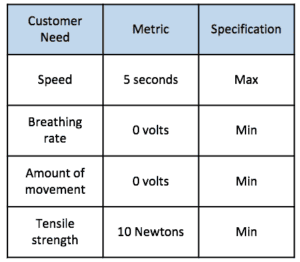
- The speed, the time between a SIDS event and an alert being sent, should be at most 5 seconds.
- The breathing rate has a target value of greater than 0, with this being the minimum tolerance.
- The amount of movement has a target value of greater than 0V, with this being the minimum tolerance.
- The tensile strength of the cloth needs to be greater than 10 N so that it is strong enough to not rip and expose the electrical elements of the device.

Biomedical Engineering Department
This project is sponsored by...
Prototype Development
Prototype drawings
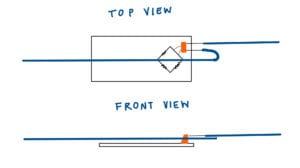
Top and front view of the wires connected to the orange block of the Wheatstone Bridge Click circuit
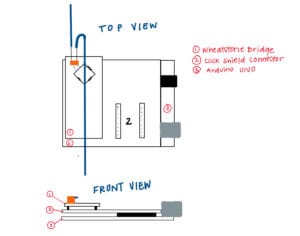
Top and front views of the Wheatstone connected to the click shield which is connected to the Arduino
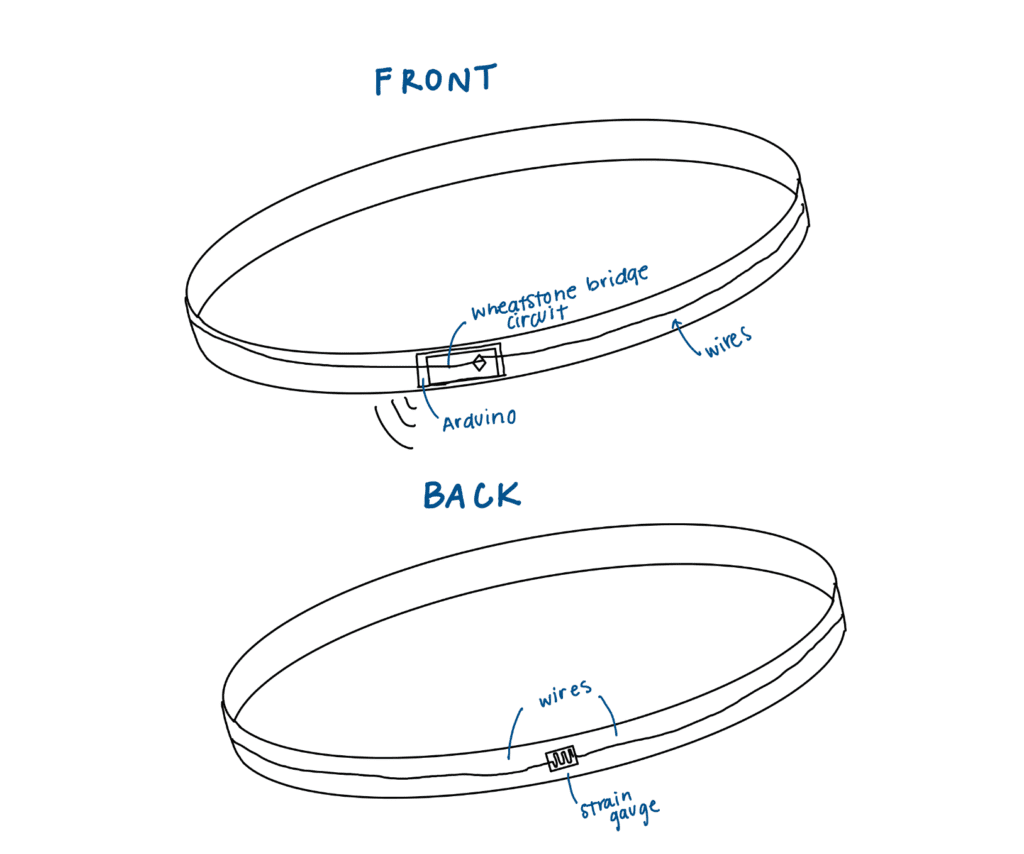
Detailed design of complete prototype with front and back views
Manufacturing Process
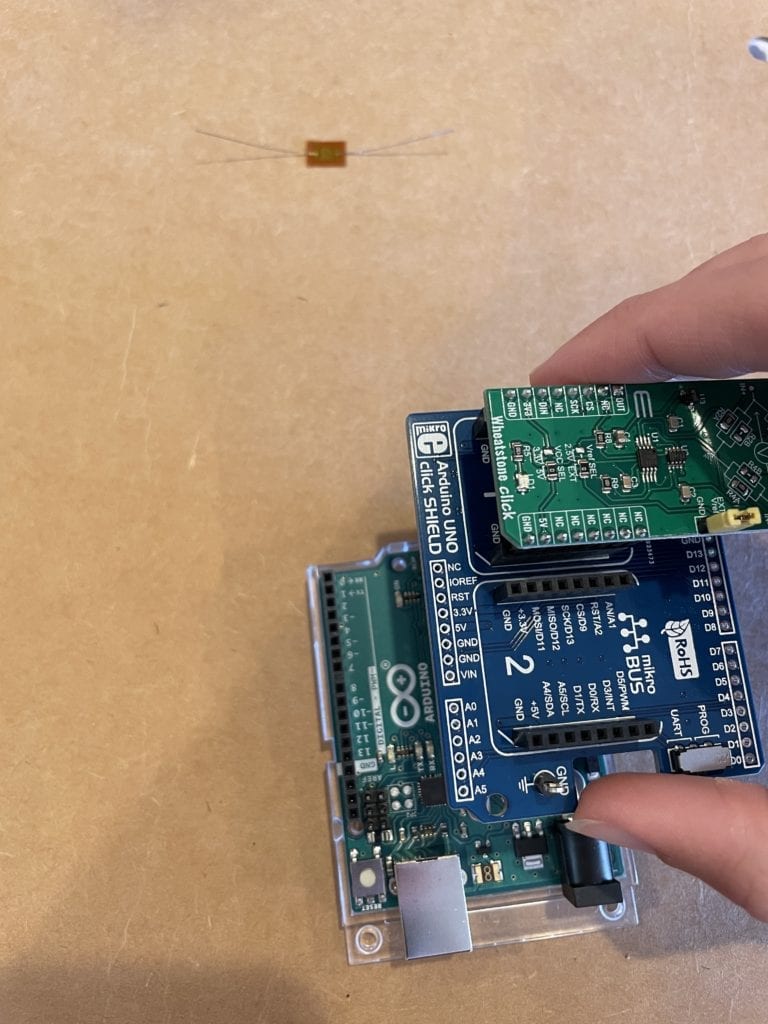
After pins are soldered, the components are inserted and connected.
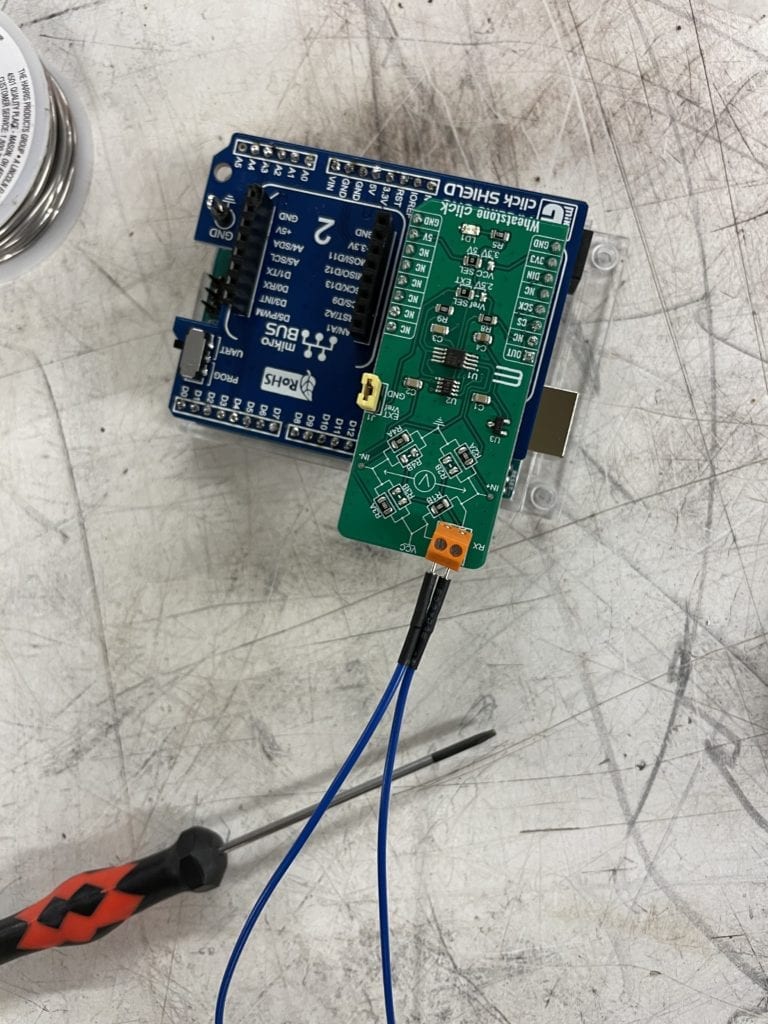
The wires are inserted into the holes on the side of the orange block. The wires are secured by screwing the nails located on top of the orange block with a small flathead screwdriver.

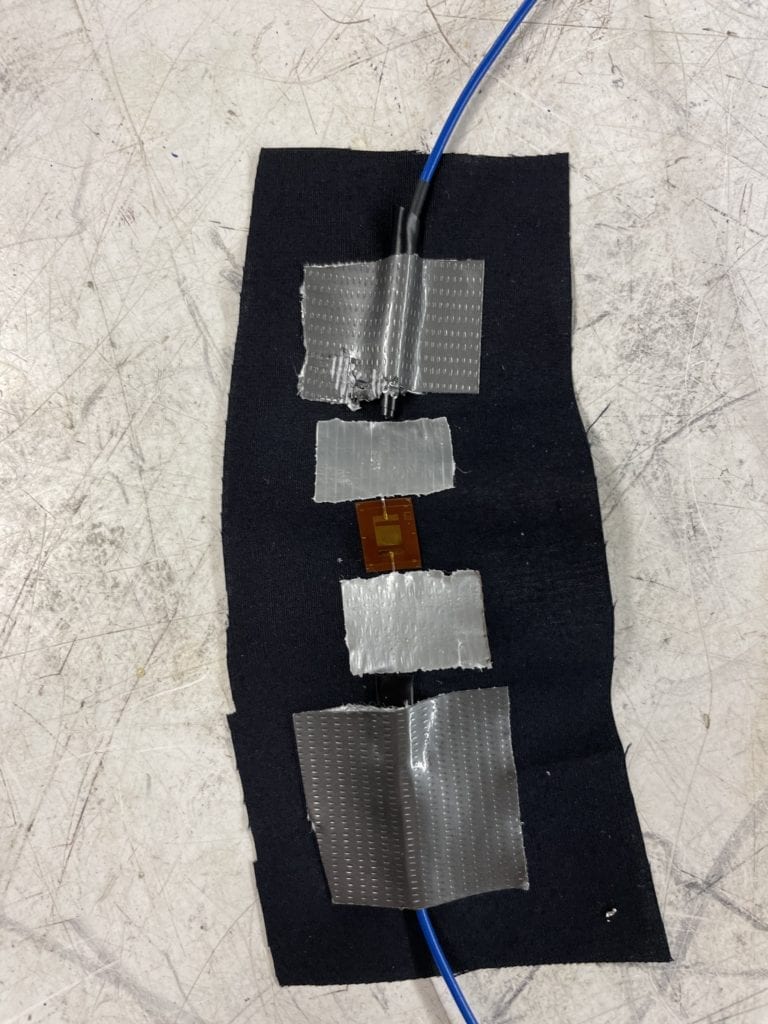
A wire is soldered to each side the strain gauge. The connections are secured to the cloth using tape.
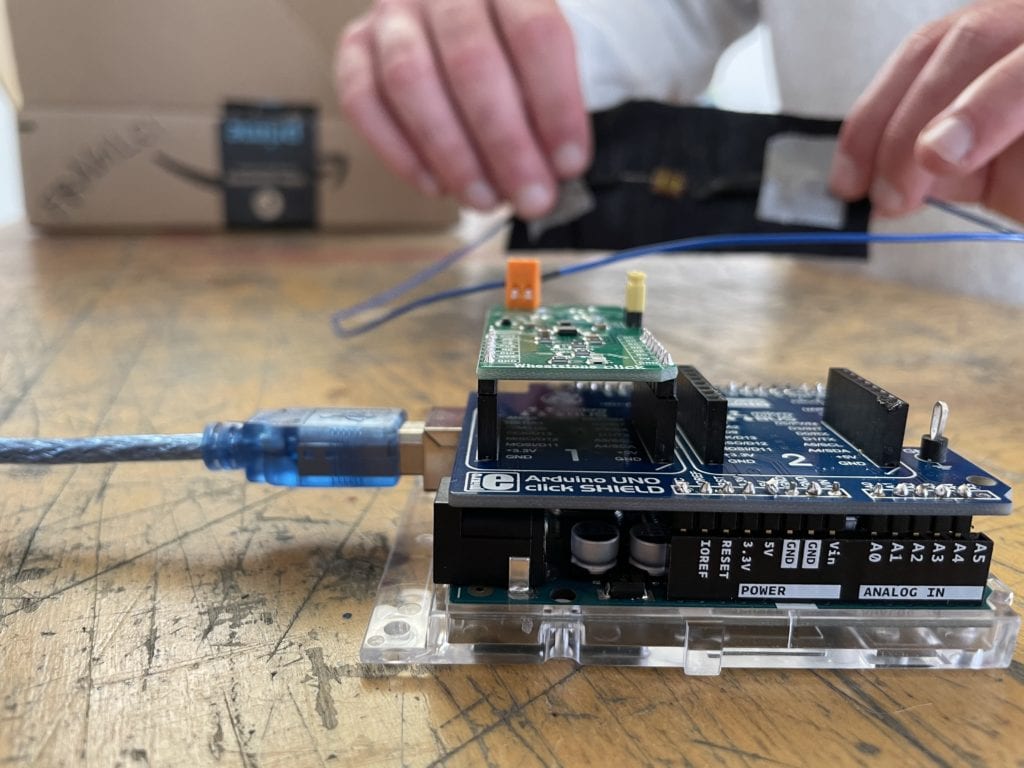
Completed prototype. The Arduino is connected the computer with the cord seen above.
Validation
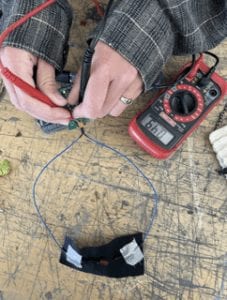
- The photo above displays the electrical testing that was performed. This was done to ensure the safety of the device for the child and to ensure that the strain was reading a proper change in voltage. The voltmeter had readings ranging from 0.49V to 1 V.
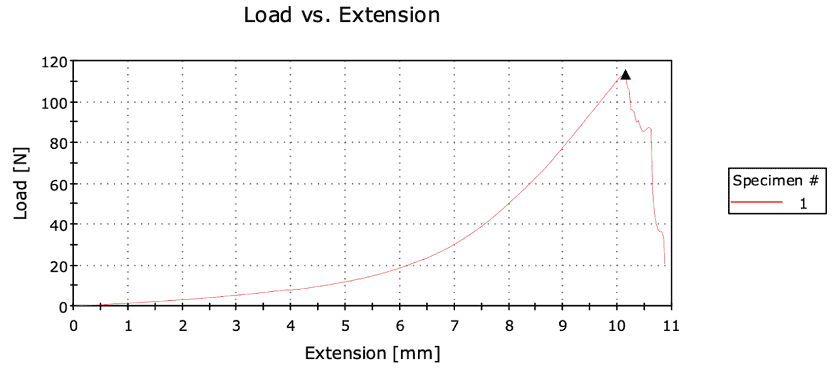
The graph above is an example of the multiple tensile tests that we performed. This was done to ensure that the material was strong enough to keep the electrical contents away from the child, as well as be strong enough to withstand the pull that the strain gauge can endure. The fabric was able to withstand a minimum of 80 N.
Conclusions
All Customer Specifications of the project were met.
- The speed of the code was met by code analysis by obtaining 1 second.
- The breathing rate and the amount of movement were met by voltage change analysis of 0.49V resting.
- Tensile Strength was met by tensile strength test in the lab by withstanding 80N of force
In the future, we would like to see a larger strain gauge used as it would allow the device to better read the change in data without breaking wires. We would also like the device to utilize an external speaker or other forms of alert rather than an LED as well as develop a circuit and board that integrates the Wheatstone with the Arduino so that would allow the device to not be as bulky.
